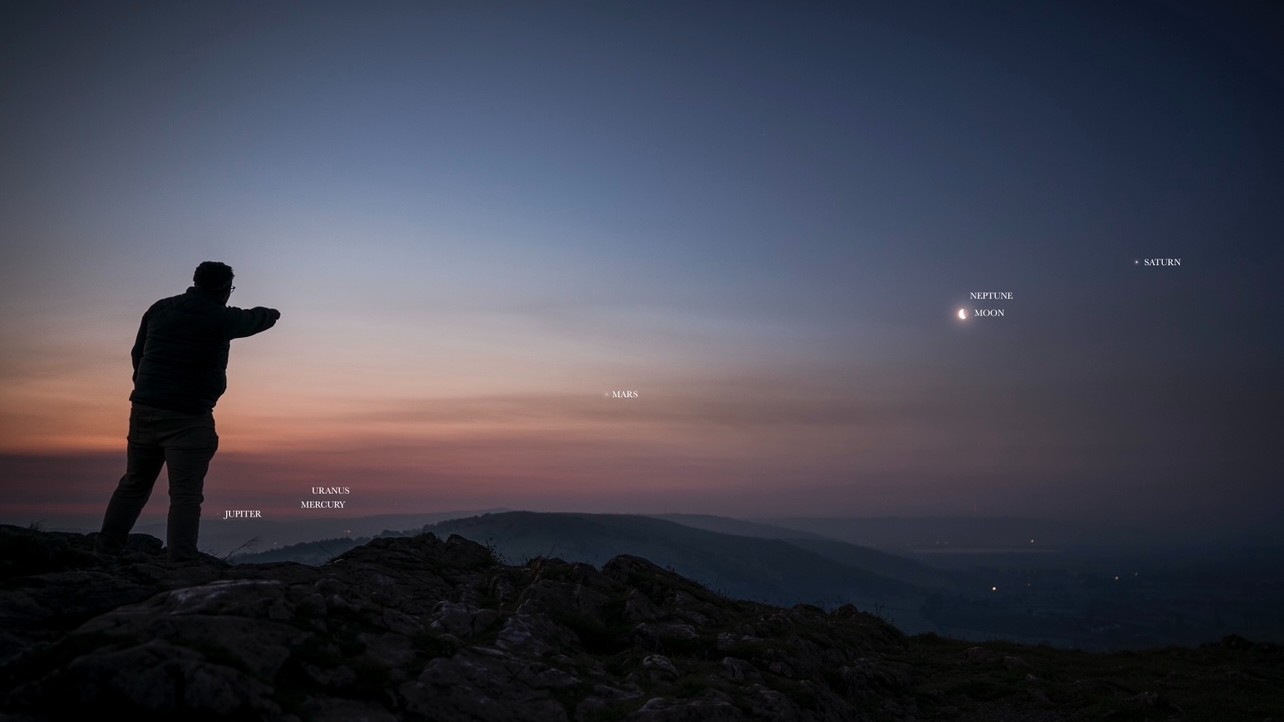
A rare and stunning photo recently captured a "parade of planets," in which six planets in our solar system appeared together in the predawn sky.
The image shows Mercury, Mars, Jupiter, Saturn, Uranus and Neptune in alignment. Mars and Saturn are clearly visible near a crescent moon, while the positions of the remaining planets, which were too distant to be seen with the naked eye, were revealed by two composite long exposures.
Astrophotographer Josh Dury captured the planetary parade on June 1 in the early hours of the morning from The Mendip Hills — a range of limestone hills in the county of Somerset in the U.K. on June 1.
The annotated image shows Mars and Saturn clearly visible near a crescent moon, while the positions of the remaining planets (too distant to be seen with the naked eye but faintly visible in the image) were revealed by two composite long exposures.
"I thought no better than to climb Crooks Peak at the unearthly hour of 2am," Dury told Live Science via email. "As time passed, it was a really special experience. Being able to see one planet after another rising and being present in my images was fantastic and really encapsulated a sense of perspective of our place within the solar system, let alone the universe."
Related: Have all 8 planets ever aligned?

Planetary conjunctions occur when two or more planets appear to be close together in the sky. Of course, this is only from our perspective of the cosmos on Earth — in reality the planets remain extremely far apart.
These conjunctions aren't rare, but they do get rarer with each planet added to the chain. The three innermost planets — Mercury, Venus and Earth — align within 3.6 degrees in the sky every 39.6 years. For all of the solar system's eight planets to align as closely, it would take 396 billion years — something that has never happened and won't happen before the sun becomes a red giant, consuming Mercury, Venus and likely Earth in the process, Live Science previously reported.
If you'd like to see a planetary alignment for yourself, Time and Date and Stellarium are two great online tools for finding viewing dates and times based on where you are in the world.







